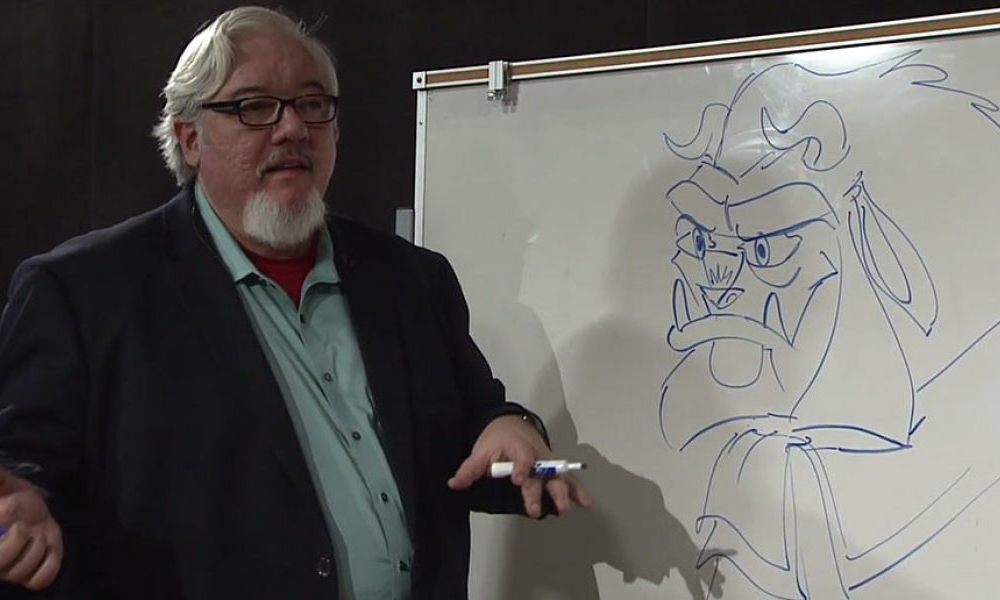***This article originally appeared in the 2021 International Education & Career Guide in the April ’21 issue of Animation Magazine (No. 309)***
At this time of the year, many students and young hopefuls are putting together their portfolios. They hope to apply for academic programs, internships and their first professional jobs. As someone who has created portfolios, and reviewed many portfolios over the years, here are some tips from me and my colleagues:
- Nobody likes making a portfolio. It is the creative equivalent of a proctology exam. That anxious, inadequate feeling you have while doing it is something we have all felt. It was years before I felt my portfolio really reflected my capability as an artist. Yet, it is something we all have to do.
- In this digital age, the word ‘portfolio’ has become an outdated generic term for your samples. Very few businesses expect a big, black, zippered folder stuffed with drawings anymore. Most reviews today are done online; on your application, you list a link to your samples page.
- Professional HR folks tell me you should make your link easy to access, and don’t make them have to deal with passwords. If you have too many impediments, they’ll just move on to the next candidate.
- Have some samples of your life drawing from the model. Beyond your personal style, it is from these we can judge your raw talent and ability. I’ve seen people hired without a lick of animation, but their drawing was strong.
- Do a page of human hands, the hardest thing to draw.
- Do a page of animals.
- Have some examples of your sketchbook. Drawings from real life. Action poses from watching a sporting event. A dog catching a frisbee. People in a coffee shop. Edit your sketchbook — don’t leave in scribbles, grocery lists, friend’s phone numbers.
- “Sometimes, we get a thick portfolio with too many pieces. Choose your best artwork, limit to maybe 20 or less pieces.” — Silvia Hoefnagels.
- Most reviewers are looking at 20-30 portfolios at a time. So, you got to impress us in the first 30 seconds. Put your best stuff first, a good piece at the end, and weak stuff in center.
- Don’t put you stuff in chronological order starting with your earliest animation. We don’t care about how far you’ve come. Show us what you can do now.
- Don’t draw famous characters like Mickey Mouse or Spider-Man. We pros don’t always agree on how to draw them correctly, so it is suicide for you.
- If you have clips of films or animatics you made, keep them to around three to five minutes or less. No reviewer has time to appreciate a profound cinematic experience. After a few minutes they’ll skip ahead to the next piece.
- “Clear facial expressions and hands in boards and animatics.” — Thomas Richner.
- “Demonstrate a spectrum of styles or you will get typecast. Going in, if I know the show style I’m applying for, I frontload the portfolio with the closest thing I have (or create it). Have them understand instantly that you are the right person for their needs. That’s how I broke into the business. I knew what they were looking for and I did a bunch of appropriate samples.”— Lance Falk.
- “In everything, demonstrate your willingness and ability to go beyond the generic, obvious, easy creative solution. Put observation and thought into the work.” — Spyros Tsiounis.
- It is good to post professional work you have done, but don’t rely on that alone. Some people made their portfolio entirely of one commercial project: the storyboards, the characters, the layouts. Show other stuff as well.
- Add a resume (CV, whatever). List places you’ve worked, even if they are not related to the arts — fry cook at Burger King, etc.
- When you are done, show your portfolio to someone whose opinion you trust. Some of your pieces may be redundant. It is hard to edit your own stuff, because you’ve put blood in everything. You are too close to it. Get a fresh eye.
- Keep updating your portfolio with new stuff. Reviewers notice when a majority of your samples are 10 years or older or they’ve seen them before.
- If you get rejected, just remember that ‘no’ does not mean ‘no forever,’ it means ‘no this week.’ Next month the whole working situation may change. I once applied to a studio that was about to close. But they didn’t tell me that. They gave me their standard rejection, “Work on your drawing,” etc. Don’t argue. Learn from the good critique you are given, implement their notes and try again. Success does not always go to the best artist, or the best hustler. Success goes to the stubborn.
To newcomers, the whole system may seem unfair, but please understand we all had to go through it. I was turned down by Walt Disney Studio twice. I got in on the third try, and ended my eight-year career there looking at portfolios. You can win if you believe in yourself. Just keep your eyes on the prize, and good luck!
Tom Sito is an award-winning animation industry veteran and professor of cinematic arts at USC. His many movie and TV credits include The Little Mermaid, Beauty and the Beast, Aladdin, The Lion King, Who Framed Roger Rabbit, Pocahontas, Shrek, The Prince of Egypt, Spirit: Stallion of the Cimarron, Osmosis Jones, Looney Tunes: Back in Action, Fat Albert, He Man and the Masters of the Universe, She-Ra: Princess of Power, Superfriends and many others. Sito is the author of Drawing the Line: The Untold Story of Animation Unions, Timing for Animation and Eat, Drink, Animate: An Animator’s Cookbook.




